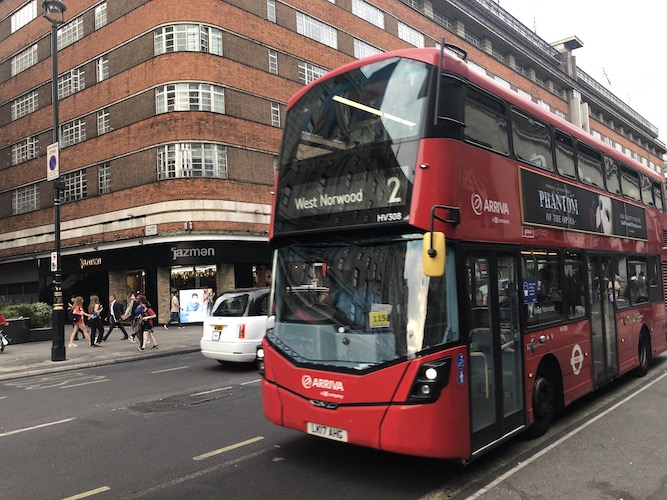Transport for London’s announcement that cuts and changes to the capital’s bus service network will be far less extensive than feared has not come as a great surprise to those in the know. Last month, speaking at On London‘s bus service discussion event, Go-Ahead London’s John Trayner and former TfL surface transport chief Leon Daniels anticipated such an outcome, one to be prompted in part by a dismayed response from Londoners to proposals in TfL’s Central London bus review – a response some suspect was actively sought by City Hall as a weapon in its long war with an array of hostile know-alls in national government.
Politicians of all parties are claiming credit for what is being widely termed a U-turn by Sadiq Khan, who is to fill the funding gap that caused the cuts to be considered in the first place with £25 million a year from City Hall reserves – money that can no longer be spent on other things. The Mayor has emerged as a saviour or as a failure at frightening more cash out of Whitehall, depending on your point of view. What remains beyond dispute is that London’s bus service is again to be reduced following many years of growth from the start of this century, and that can only be a bad thing for the city.
It is hard to overstate the importance of the bus network both to Londoners and to London’s economy. The capital’s increasingly green fleet of 8,800 vehicles carried over two billion passengers a year pre-pandemic and while it may never fully recover to that level it continues to inch upwards as Covid recedes and a transportation “new normal” evolves. Crucially, it remains London’s most-used and least expensive public transport mode and is valued by Londoners of every kind.
Yet the past several years have seen ridership slip as journey times have lengthened and reliability has reduced. The reasons for that decline are various and often fiercely contested, but there is no question that buses have lost road space priority as policy makers have sought to encourage and facilitate cycling and pedestrian schemes.
Walking and cycling form with buses the holy trinity of desirable surface movement, between them providing cleaner and more efficient use of road space, along with more appealing public realm. All three are rightly supported, but practicalities and priorities sometimes bring them into conflict.
Resolving that conflict is an often complex policy challenge. The worry is that recent solutions might not be quite right and that bus passengers, many of them low paid and elderly, have been unduly penalised, sometimes to the benefit of the affluent and much smaller London cycling demographic, with its narrow, sometimes selfish, campaign focus on and its influential media allies.
The backlash against cuts has demonstrated that many Londoners greatly value their bus service, hailed as a world-leader in better times. This gives hope that they can raise their collective voice more loudly in future. Pedestrians need something similar. The politically difficult case for more extensive road-user charging, which would beneficially reduce the number of private motor vehicles on the roads, should be carefully and persuasively made. Ultimately, though, the trio of desirable surface travel objectives needs to be pursued with the greatest possible mutual respect and constructive collaboration.
The scale and distribution of London’s bus services are rightly always under review, and changes are sometimes justified. Maintaining low bus fares, enabled by subsidy from other areas of TfL activity, is going to be difficult in these financially exacting times. Nonetheless, the goal of bus policy must surely be to increase demand for bus services and to meet it. The reverse would be the wrong direction of travel for London as a whole.
From onlondon.com
Dave Hill: London’s bus service is still in decline and that must be reversed

